Are Witches still Scary? – the Weïrd Sisters meet Macbeth
Horror moments, Shakespeare Edition.
‘Horror Moments’ is a series examining horror-inflected scenes and themes in unexpected places. The ‘moments’ are published weekly on Thursday mornings, and I share a range of articles on the history of magic, theatre, storytelling, and more on Monday afternoons – don’t forget to subscribe!
[Spoilers: Macbeth (1606), The Blair Witch Project (1999), The Witch (2015)]
A strange thing happened to me as I sat down to write this article. I knew I was going to talk about the Macbeth (1606) witches – how could I not include them as a ‘horror moment’ in this series? – so I started watching various clips from stage and film adaptations.
It’s the Shakespeare play that seems to be most conspicuously in conversation with horror cinema as directors of screen adaptations have tried to make it scary, a challenge considering that, for a modern audience, ‘witch hunt’ is synonymous with irrational persecution. There have been a wide range of approaches, from the traditional portrayals of cackling hags like Orson Wells’ version in 1948 to Rupert Goold’s trio of violent nurses in 2010.
On the stage there are strange cross-pollinations with horror cinema, most notably the Royal Shakespeare Company’s 2018 production where the ‘weïrd sisters’ were three little girls in pyjamas carrying dolls, drawing on the late-twentieth century fascination with the malevolent child made famous by films like The Omen (1976).
But here’s the thing: I’m not sure I’ve ever found the witches scary. Fascinating? Yes. Fun? Certainly. Great Halloween costume? Fetch me my cauldron. But genuinely chilling? I’m not so sure.
I think the Joel Coen version comes closest for me. There’s something so off-putting and uncanny about Kathryn Hunter’s performance which feels like a glimpse of something inhuman and unknowable, casting too many reflections in a pool, multiplying at will, shuffling into the mist with elbows raised and flowing cloak...
Most productions seem almost to be trying too hard to play up their malevolence and they become pantomimic – but then how can modern storytellers recreate the mood that the witches would have struck back in 1606 when the play was first performed?
The story of Macbeth comes from Holinshed’s Chronicles (1577) which had recounted the same basic plot used in the play. Macbeth is a ‘Thane’ of Scotland who murders his way to the throne. He is inspired to do so when he and his companion, Banquo, meet with three strange prophetic women who foretell that Macbeth will become king, but that Banquo’s heirs will rule after his death. They are not described as ‘witches’ but as
‘thrée women in strange and wild apparell, resembling creatures of elder world’
The accompanying woodcut doesn’t at all resemble what we imagine based on their description in the play, yet this was Shakespeare’s source.
In Shakespeare’s adaptation, they are much more grotesque, embodying all the worst early modern fears about the vengeful magic of the marginalised, they boast about the curses they have laid on people and pore over the ingredients of horrid recipes. Banquo’s describes them as ‘withered’ and ‘wild,’ they are figures ‘that look not like the inhabitants o' the earth, And yet are on't.’
All of this fits perfectly with the version of witchcraft imagined by King James who, when Macbeth was written, had recently inherited the English throne. As the king of Scotland, he had personally participated in trials that led to the execution of suspected witches. His book Daemonologie (1597) was in part a response to an incident when witches had supposedly tried to sink his ship, so the close proximity of witchcraft and regicide in the play is no coincidence.
I wonder whether our recent recasting of the ‘witch’ as an innocent figure of religious mania and misogyny, as an empowered fantasy heroine, or as a fun antagonist in children’s stories who poses no real-world threat, have all stripped away what made her truly terrifying to the early modern mind?
Even Robert Eggers excellent folk horror The Witch (2015) takes an early modern setting and makes its witches seductive and emancipated, embodying freedoms denied to a girl raised in a strict puritanical home. James I would not have approved.
I wonder if he would have enjoyed The Blair Witch Project (1999). This, for me, is the scariest of the horror films that revolve around witches. It has all the ingredients of the traditional fairy-tale: the ‘Blair Witch’ is a local Maryland legend who supposedly abducted and murdered children and performed gruesome rituals.
The film popularised the ‘found footage’ genre and I think it’s because it plays its story so straight that it works. It holds back on showing you the monster to an almost frustrating extent: the witch becomes an omniscient evil, a predatory something lurking, never fully seen, between the trees or just outside the characters’ tent. This is a film where the most chilling moment has to do with being made to turn and look the other way.
The creeping isolation of the film crew who are documenting the legend of the witch, and the fact that they slowly find they cannot navigate their way out of the woods again, brings us something of the terror associated with travelling across country in the days before easy transportation. They are crossing wild and liminal spaces just as Macbeth and Banquo are doing when they meet the strange inhabitants of the remote ‘heath.’ The Blair Witch is just abstract enough that we can fill in our own modern version of the nastinesses that a force of evil could commit off-grid.
So am I asking for a Blair Witch themed adaptation of Macbeth? Maybe not exactly, but I think directors need to be particularly inventive to find again the horror that witches once possessed. These days, the truly scary thing about the history of witchcraft is the fact that real women and men were murdered in the name of this belief. On Monday, I’ll be exploring an incredible book which is worth reading if you’re interested in that history, but until then,
Happy Nightmares everyone!
P.S The Blair Witch Project is currently free to watch on BBC iPlayer. Definitely check it out if you haven’t seen it yet.
Horror moments are posted every Thursday and a wide variety of articles exploring the history of magic, theatre, storytelling, and more are published on Monday afternoons.

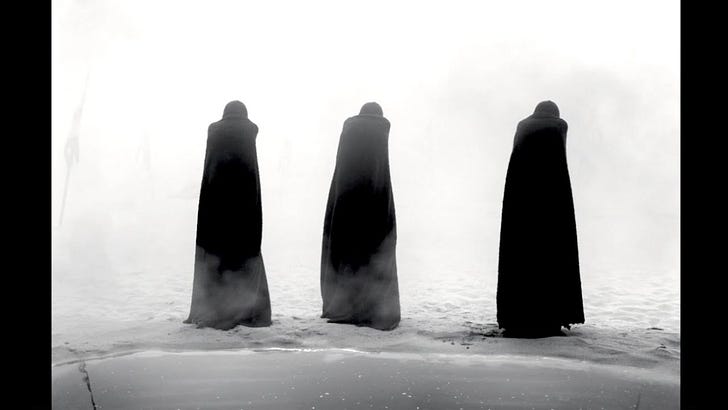


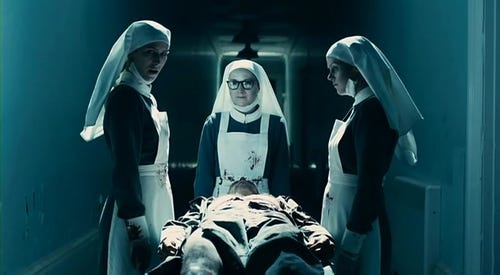
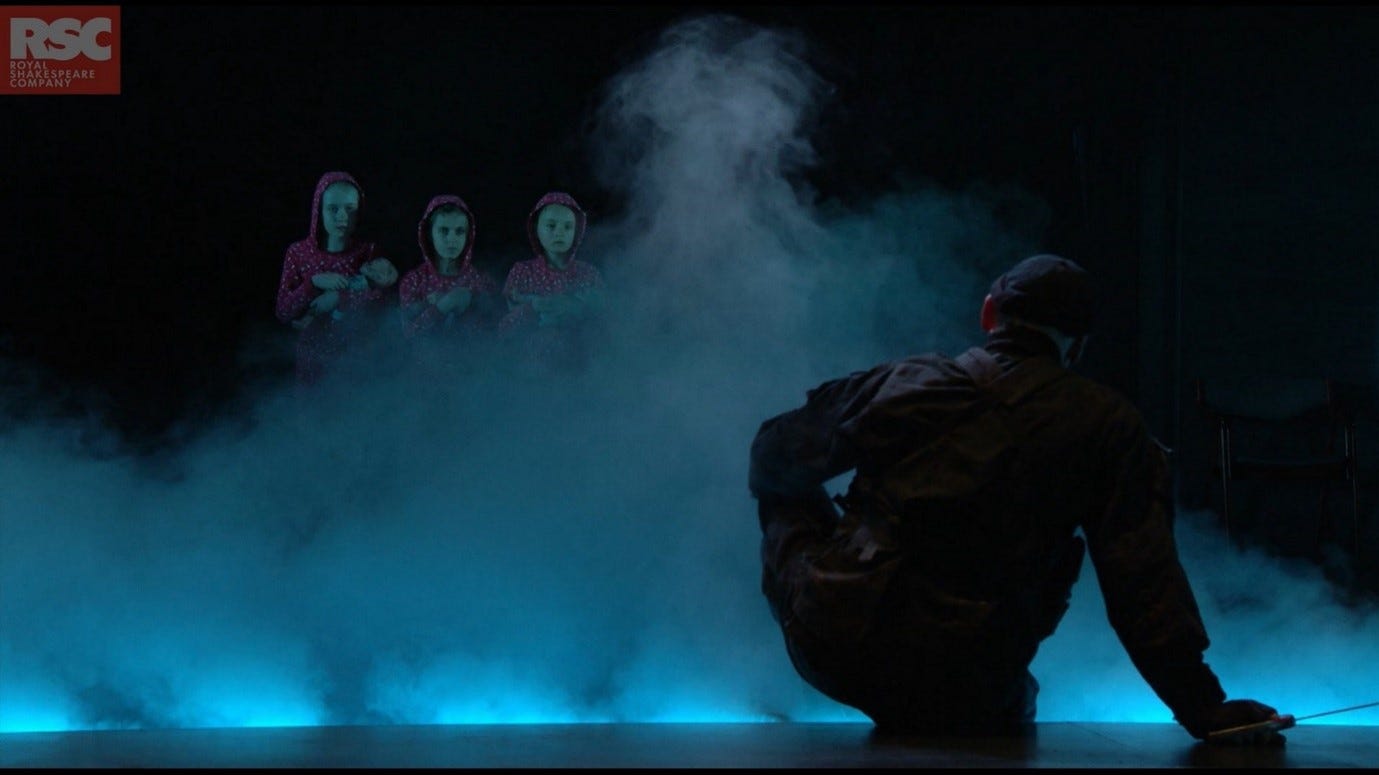

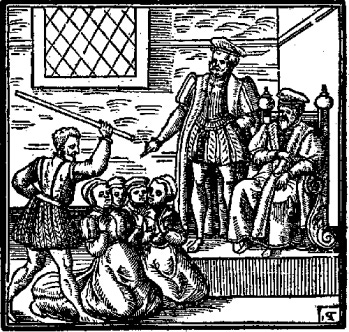
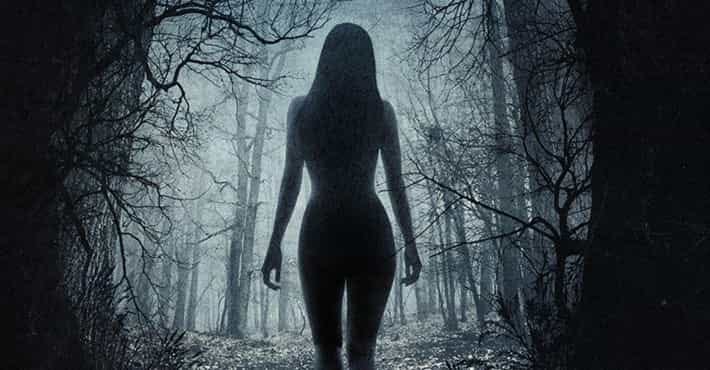
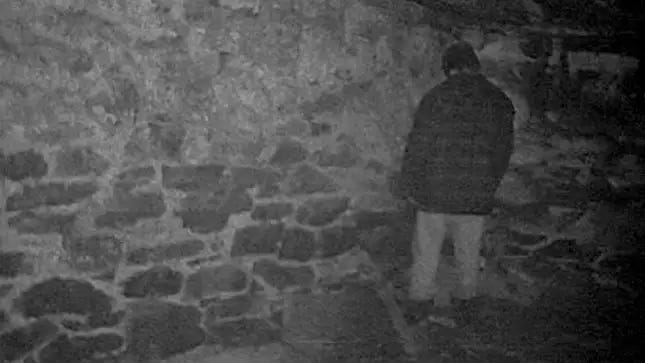
a similar vein - Shakespeare’s villains. my high school english teacher told us Iago from Othello was regarded as the greatest villain of all time (the most evil, the most clever, the best-written) and encouraged us to think about why might that be. i wonder if there’s overlap with the witches - is Iago the greatest villain because of the context that Shakespeare wrote in, or does he still hold up? i personally think he does!
There seems to be a taming of the evil witch in contemporary English novels, following the emancipation of women. They were not as terrifying as the witches from childhood like Hansel and Gretel or a gruesome witch from Philippine folklore called manananggal, a witch that can sever its upper torso and fly over the rooftops seeking its prey - sucking a pregnant woman's fetus!